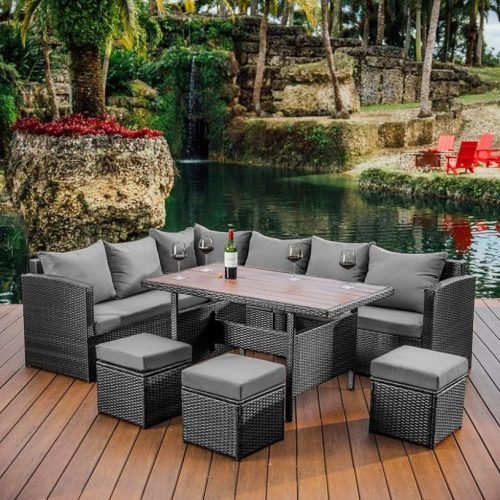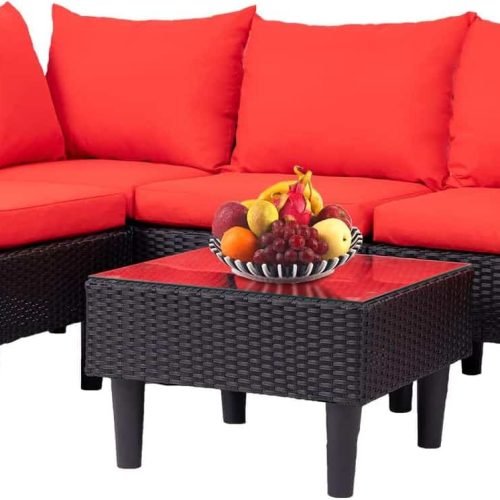Winter Gardening Tips and Tricks: Grow in Cold Months
My uncle consistently grows produce all year in Utah, on a small quarter-acre lot? He does it at over 4,000 feet elevation1. Winter gardening might seem tough, but with the right methods, you can have a thriving garden even in the coldest months. Learn how to beat cold weather, extend your growing season, and make the most of your garden space for a year-round harvest.
Key Takeaways
- Cold-weather gardening in Zones 3 and 4 needs special structures like hoop houses and cold frames to overcome challenges1.
- Using a cold frame can increase your growing zone by one. Adding row covers inside gives extra protection1.
- Row covers can extend the growing season by up to six weeks in spring and three months overall when used in both spring and fall1.
- Cloches like Wall O Water let you plant crops like tomatoes in cold climates four to six weeks earlier1.
- Proper soil preparation and choosing the right microclimate are crucial for successful winter gardening1.
Introduction to Winter Gardening Methods
Winter gardening comes with its own set of challenges. But, with the right techniques, you can grow and harvest fresh produce even in the cold. By learning how to protect plants and choose the right crops, you can enjoy a year-round harvest2.
Overcoming Cold Weather Challenges
Freezing temperatures, snow, and less sunlight need careful planning. Growing hardy vegetables like ‘Bull’s Blood’ beetroot is a good start2. It’s also smart to grow a lot of these crops for late fall, winter, and early spring2. To reduce risks, plant vegetables in different spots2.
Year-Round Harvesting with the Right Techniques
Leaving hardy vegetables in the soil during cold weather lets them keep growing2. Sowing new seeds in late summer can lead to a harvest in fall, winter, or early spring2. Fast-growing greens like winter lettuce and cabbages are great for winter2.
Some top vegetables for the cold months include pea shoots, lettuce, mache, winter purslane, spinach, beet greens, and radishes2. Fertilizing with compost and using liquid fertilizer before planting helps2. Using greenhouses, pallet collar beds, frames, row covers, or plastic lids is key for protecting crops2. Greenhouses and polytunnels are especially good for keeping the climate stable2.
Winter Gardening Tip and Tricks
Successful winter gardening relies on using protective structures like cold frames and hoop houses3. These tools trap heat and protect plants from harsh winds and snow. They let gardeners grow more crops and extend the growing season3.
The Benefits of Cold Frames and Hoop Houses
Cold frames are small, rectangular structures with a clear lid that sits on the ground3. They trap heat and create a warm spot for plants to grow well3. Hoop houses are bigger, tunnel-like structures that cover garden beds. They offer more protection and space for winter crops3.
Both cold frames and hoop houses help gardeners grow a wide variety of plants3. This includes root vegetables, cabbages, greens, onions, and even perennial herbs and shrubs3.
Frost Protection with Row Covers and Cloches
Row covers and cloches add extra frost protection for delicate plants4. Row covers are lightweight, breathable fabrics that cover plants or rows4. They trap heat and protect from sudden cold4. Cloches are small, bell-shaped structures that create a greenhouse-like environment for individual plants4.
These simple techniques can greatly help your winter garden thrive4.
| Winter Gardening Techniques | Benefits |
|---|---|
| Cold Frames | Trap heat, insulate plants, shield from harsh weather |
| Hoop Houses | Provide larger-scale protection, allow for diverse crop cultivation |
| Row Covers | Offer lightweight, breathable frost protection |
| Cloches | Create miniature greenhouse-like environments for individual plants |
Using these winter gardening techniques can make your cold-weather garden thrive34. You can enjoy a bountiful harvest all year round34.
Extending the Growing Season
There are many ways to extend the growing season for winter gardening5. August is the best time to plant fall crops like lettuce and kale5. Start seeds for parsnips and Brussels sprouts in July5.
Carrots and broccoli varieties can be planted in July for a fall harvest5. Some good carrot varieties for fall include Adelaide and Goldfinger5.
5 Vegetables get sweeter in cold weather as they turn starches into sugars6. Start seedlings indoors eight weeks before the last frost6. This gives you a head start on the growing season6.
6 Raising beds by 4 inches improves drainage and allows for earlier planting6. Homemade cold frames provide a warmer spot for crops in cold weather6. Cloches protect plants from frost, extending the growing season6.
6 Professional growers use low tunnels and row covers to start crops early6. Plastic mulch warms the soil, extending the growing season for heat-loving crops6. Growing herbs on a windowsill keeps you enjoying fresh flavors all year.
7 Over 30 types of cold-hardy vegetables and herbs can be grown in winter7. ‘Winterbor’ kale takes about 60 days to harvest as a baby crop7. Cloches protect plants from frost for up to six weeks7.
7 Heavyweight row covers offer more insulation but let less light through7. Cold frames should face south for maximum light and use materials like 2-inch-wide hemlock boards7.
7 Mini hoop tunnels are made from ½-inch PVC pipes and can cover different crops7. Vent mini hoop tunnels in spring and fall to prevent vegetables from getting soft7. Keep crops away from the cover in winter to avoid foliage freezing7.
“By utilizing a variety of season extension techniques, gardeners can cultivate an abundance of fresh, flavorful produce throughout the colder months.”
Maximizing Garden Space for Winter Crops
As winter approaches, using your garden space wisely is key for a good harvest. Planning carefully and using intensive gardening can make your garden thrive, even in small areas.8
Succession planting is a smart move. It means planting early crops and then replacing them with later ones as they’re picked9. This keeps your garden busy and productive. Vertical gardening is also great, letting you grow plants like peas and beans up, saving space9.
Container gardening is perfect for small spaces or balconies9. Choose cold-hardy, compact varieties for a steady supply of fresh food all winter.
- Radish roots only perfect for 2-4 weeks, then get woody and need to be re-seeded8.
- Zucchini planted twice, inside in early spring and outside in early June for optimal growth8.
- Beans grown inside act as a trap crop for spider mites, providing early warning signs8.
- Peas planted both outside and inside, with inside plants removed once outdoor peas are plentiful8.
- Young seedlings of green onions started in flats take a week or two to sprout8.
Winter-hardy plants like Galleon cauliflower, mustard greens, spinach, green onions, or leaf lettuce do well in cool weather.8 By planning your garden well and using space-saving tricks, you can get a lot from your garden, even in winter.
| Space-Saving Technique | Benefits |
|---|---|
| Raised Bed Gardening | Vegetables in raised beds produce several times more than crops planted in the ground due to better and quicker control of fertility9. |
| Succession Planting | Exponentially increases yields by replacing early-maturing crops with later-season varieties9. |
| Vertical Gardening | Allows for more crops to be planted in the same area by growing climbing varieties upwards9. |
| Companion Planting | Maximizes small garden space and provides benefits like pest control9. |
Starting hardy crops in June prepares for any greenhouse transitions in the summer.8 By using these methods, you can turn your winter garden into a lush, productive space, even in the coldest months.
“With a few raised beds, individuals can achieve a rewarding garden with a prolific harvest to sustain their family throughout the summer and beyond.”9
Tip: Alfalfa pellets sprinkled on soil provide essential nutrients as plants grow rapidly.8 Tip: Stressed plants may benefit from direct feeding with kelp or a mixture of kelp and fish fertilizer on their leaves.
Conclusion
By following the winter gardening tips in this guide, gardeners can keep their gardens thriving all year. They can learn to grow in cold weather and use tools like cold frames and cloches. This way, they can grow more food for longer periods10.
Whether you’re new to winter gardening or have been doing it for years, these tips are helpful. They show how to grow cold-hardy crops and protect them from the cold. This way, you can still grow your own food even when it’s chilly1011.
Gardening isn’t just for warm weather. With the right techniques, gardeners can grow more and longer. They can enjoy their garden’s bounty all year. So, let’s face the challenges, be creative, and make our winter gardens flourish11.
FAQ
What are some strategies for overcoming cold weather challenges in winter gardening?
To beat the cold, gardeners can use tools like cold frames and hoop houses. These trap heat and protect plants from wind and snow. Choosing hardy plants and creating warm spots in your garden also helps.
How can I extend my growing season and enjoy a year-round harvest?
Protective structures like cold frames and hoop houses can extend your growing season. Row covers and mulch also help. Planting near heat sources and using vertical gardening can boost your winter garden’s yield.
What are the benefits of using cold frames and hoop houses for winter gardening?
Cold frames and hoop houses keep plants warm and safe from harsh weather. They let you grow more plants for longer, even in cold months.
How can I use row covers and cloches to provide frost protection for my winter garden?
Row covers and cloches add an extra layer of protection against frost. They help plants survive sudden cold snaps. This lets you plant earlier and harvest later, extending your growing season.
What techniques can I use to maximize my limited garden space for winter crops?
Try succession planting, vertical gardening, and container gardening to use your space well. These methods let you grow a variety of winter crops, even in small areas.
Source Links
- https://homesteadingfamily.com/gardening-in-winter-cold-weather-growing-methods/ – Gardening in Winter (Cold-Weather Growing Methods)
- https://sarabackmo.com/growing-vegetables-in-winter-a-beginners-guide/ – Growing Vegetables In Winter: A Beginner’s Guide
- https://www.countryfairgarden.com/gardening-tips/winter/ – Winter Gardening Tips & Tricks for Colorado Landscapes
- https://ecogardener.com/blogs/news/winter-gardening-dos-and-donts?srsltid=AfmBOorGwa6WXCSOKFUX00U6DT6y59yElYCwERfRLom31I0dcf2Yx-Qv – Winter Gardening Do’s and Don’ts
- https://www.sowinginsuburbia.com/blog/year-round-gardening – Tips for Extending Your Garden’s Growing Season — Sowing in Suburbia
- https://www.saferbrand.com/articles/extend-growing-season – Garden Longer: How to Extend the Growing Season
- https://www.finegardening.com/project-guides/fruits-and-vegetables/extending-the-growing-season – How to Extend the Vegetable Growing Season – Fine Gardening
- https://blog.bcgreenhouses.com/start-planning-for-your-winter-greenhouse-now – Summer Prep for Winter Greenhouse: Tips for Managing & Double Cropping
- https://journeywithjill.net/gardening/2016/02/22/how-to-maximize-your-harvest-in-a-small-garden-space/ – Maximize Your Harvest in a Small Garden Space – The Beginner’s Garden
- https://www.thehydroponiccity.com/blogs/news/winter-gardening-tips-keep-garden-thriving?srsltid=AfmBOoqeljFKeDNT0AH7CzNx5StjbvfnlZN1WQJb270wLLwb3azEPZFD – Winter Gardening Tips: How to Keep Your Garden Thriving Year-Round
- https://www.greenwashingindex.com/winter-gardening-tips/ – Winter Gardening Mastery: Top Tips for Your Best Season






